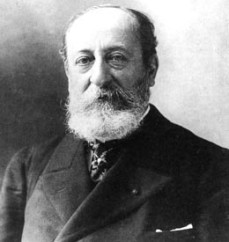Saint-Saens – Cello Sonata Op.32 No.1 in C Minor (1996)
Saint-Saens – Cello Sonata Op.32 No.1 in C Minor (1996)

1. Allegro 2. Andante tranquillo sostenuto 3. Allegro moderato Jeremy Findlay - cello Elena Braslavsky – piano
In 1872, Camille Saint-Saëns composed both the Cello Concerto in A minor No. 1, Op. 33, and the work under consideration here, the Sonata No. 1 for cello and piano, Op. 32. The two works bear certain expected similarities; in addition to instrumentation, both works are in minor, and it is speculated that the composer actually worked on them concurrently. On a broader level, both works share a certain gravity, the roots of which writers have often located in the composer's personal life: shortly before undertaking the sonata, a beloved relative died, while around the same time some of the composer's close friends were suffering as prisoners in the Franco-Prussian War. This personal grief arguably can be sensed more readily in the sonata, its intimate nature lending an urgency to musical materials that, in the context of the concerto genre, might be taken for a more theatrical, rather than personal type of expression. A rising and falling third -- quintessential gesture of despair -- looms over the first movement, relentlessly recurring in its original form and occasionally transforming into an even more strident tritone. The startling conclusion of the movement, however, relies on the raw physicality of heavy-handed bowstrokes in the cello's lower range. This sets up a bittersweet contrast with the delicately sunny opening of the second movement cast in major mode and marked Andante tranquillo sostenuto. The movement, which borrows some of its melodic material from Meyerbeer's L'Africaine, occasionally turns pensive, particularly in those passages where shades of the minor mode return and the nimble accompaniment softens into drawn-out chords. At the end of the movement, the composer draws listeners in to hear the faint patter of the piano and pizzicato cello, adding a subtle but poignant warmth to the cello's final bowed note. The sense of fond reminiscence that marked the second movement is overshadowed by the turbulence of the finale. The busy virtuosity that lends the movement its urgency also provides the fluid undercurrent in more restrained moments, the piano's busy figurations melting into a mottled background for long-breathed melodies in the cello. As the movement approaches its close, however, this lyricism stiffens and becomes emboldened, until a frenzied, rising chromatic line leads to the work's final catharsis. --- Jeremy Grimshaw, Rovi
download: uploaded yandex 4shared mediafire solidfiles gett mega zalivalka filecloudio anonfiles oboom ziddu
Zmieniony (Poniedziałek, 21 Kwiecień 2014 21:15)








